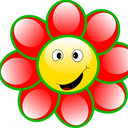Flower bouquet variation in four species of Crocus ser. Verni.
Mots clés
Abstrait
Flowering plants employ a wide variety of signals, including scent, to attract pollinators. The aim of this work was to examine whether flower volatiles in four closely related Crocus species are linked to species divergence and to the current knowledge on their pollination syndromes. Fragrances of freshly opened flowers in Crocus etruscus, C. ilvensis, C. neglectus, and C. vernus, all belonging to ser. Verni, were analyzed using GC/MS. Results coincide with present knowledge about systematic relationships among taxa. The four species fall into two main fragrance types, based on similarities of their volatile compounds. In C. etruscus, C. ilvensis, and C. neglectus, oxygenated monoterpenes (lilac aldehyde B and A) are most abundant, while C. vernus has a fragrance rich in monoterpene hydrocarbons (α-pinene and limonene). Our results point towards outcrossing mating strategies for C. etruscus, C. ilvensis, and C. neglectus, whose volatile compounds are known as pollinator attractants. This is in line with their flower architecture, showing a style of variable height, often overtopping stamens. On the other hand, a self-pollination strategy was repeatedly suggested in the literature for C. vernus, marked by flowers with the style deeply inserted in the stamens and also by a completely different flower bouquet.



